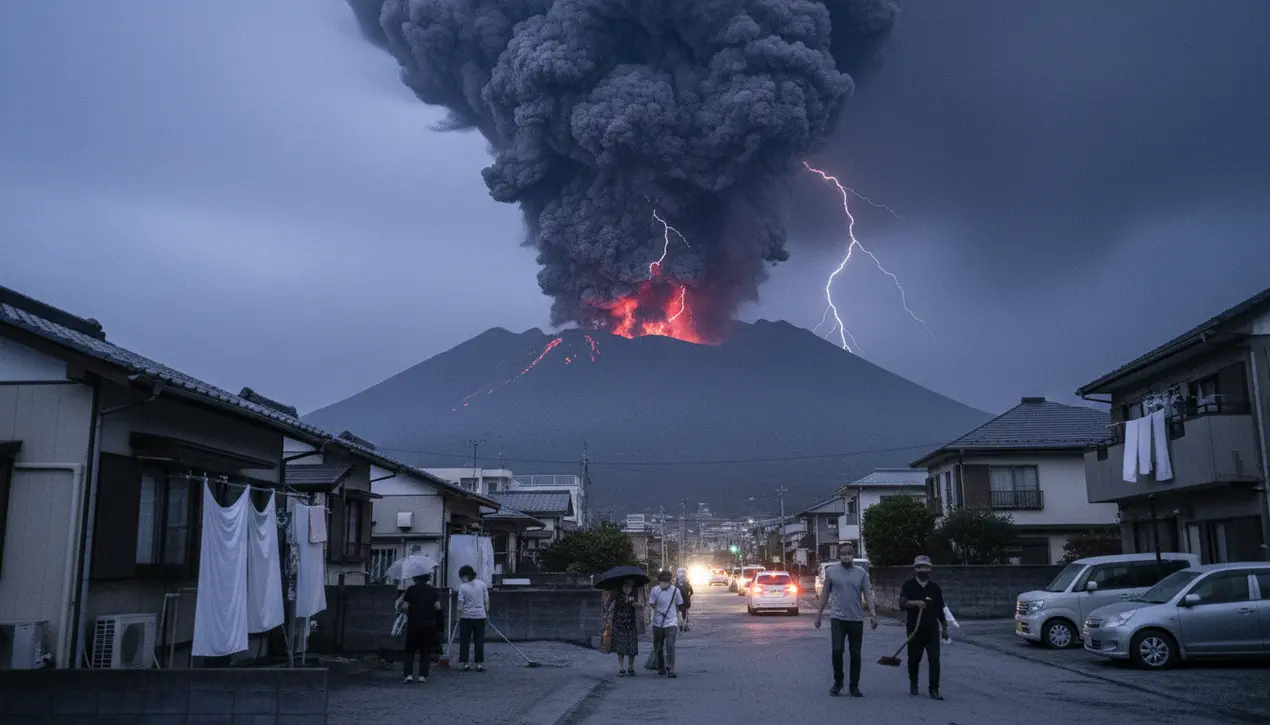
Scienceearth scienceVolcanology
Sakurajima Volcano Erupts in Japan, Causing Ashfall.
TH
Thomas Green
2 hours ago7 min read
The Sakurajima volcano, one of Japan's most persistently active giants, roared back to life with an eruption that sent a towering plume of volcanic ash high into the atmosphere, casting a grim shadow over the nearby prefectures and triggering official ashfall alerts. This isn't just another geological burp; it's a stark reminder of the raw, untamable power that simmers beneath our feet, a force that has shaped the very islands of Japan and continues to dictate the rhythm of life for those in its shadow.Located on the Kyushu island, Sakurajima is more than a mountain—it's a constant character in the region's story, with a recorded history of eruptions stretching back centuries, its activity so frequent that the nearby city of Kagoshima has integrated volcanic preparedness into its very civic fabric, with specialized ash-clearing infrastructure and regular evacuation drills becoming as mundane as traffic lights. The plume from this latest event, while dramatic, sits within the volcano's typical behaviour pattern, a pattern meticulously documented by the Japan Meteorological Agency which maintains a constant, vigilant watch on its every tremor and exhalation.To understand Sakurajima is to understand subduction, the colossal planetary process where the dense Philippine Sea plate is relentlessly forced beneath the continental Amurian plate, generating immense heat and pressure that melts rock into the magma which ultimately fuels these fiery displays. This tectonic drama is part of the larger 'Pacific Ring of Fire,' a horseshoe-shaped belt bordering the Pacific Ocean that is home to about 90% of the world's earthquakes and volcanoes, placing Japan on the front lines of planetary geology.The immediate consequences of such an eruption are tangible: the fine, abrasive volcanic ash smothers everything, posing serious risks to respiratory health, crippling transportation by reducing visibility and damaging vehicle engines, devastating agriculture by coating and destroying crops, and potentially contaminating water supplies. Looking back, history offers sobering precedents; the 1914 Taisho eruption of Sakurajima was so colossal it transformed the volcano from an island into a peninsula by filling the narrow strait with lava flows, and while current activity is nowhere near that scale, it serves as a humbling benchmark.Experts from the University of Tokyo's Earthquake Research Institute would likely note that while this single event doesn't necessarily presage a cataclysmic eruption, it is a critical data point in the ongoing assessment of the volcano's internal pressure system, a warning that the magma chamber is being actively recharged. The long-term implications weave a complex tapestry of risk and resilience; continued ashfall could alter local ecosystems and agricultural patterns, while the ever-present threat of a larger, more explosive event necessitates sophisticated early-warning systems and urban planning that prioritizes rapid evacuation routes.For the residents of Kagoshima, this is simply part of life's equation, a calculated coexistence with a magnificent yet dangerous neighbour, a daily lesson in humility before the forces that, on a cosmic scale, are actively building the world even as they threaten to disrupt it. This eruption is a single frame in a movie that has been playing for millennia, a vivid demonstration that our planet is not a static museum piece but a dynamic, living engine, and Sakurajima is one of its most prominent and powerful pistons.
#featured
#Sakurajima
#volcanic eruption
#ash plume
#Kagoshima
#Japan
#natural disaster
Stay Informed. Act Smarter.
Get weekly highlights, major headlines, and expert insights — then put your knowledge to work in our live prediction markets.
Comments
Loading comments...
© 2025 Outpoll Service LTD. All rights reserved.